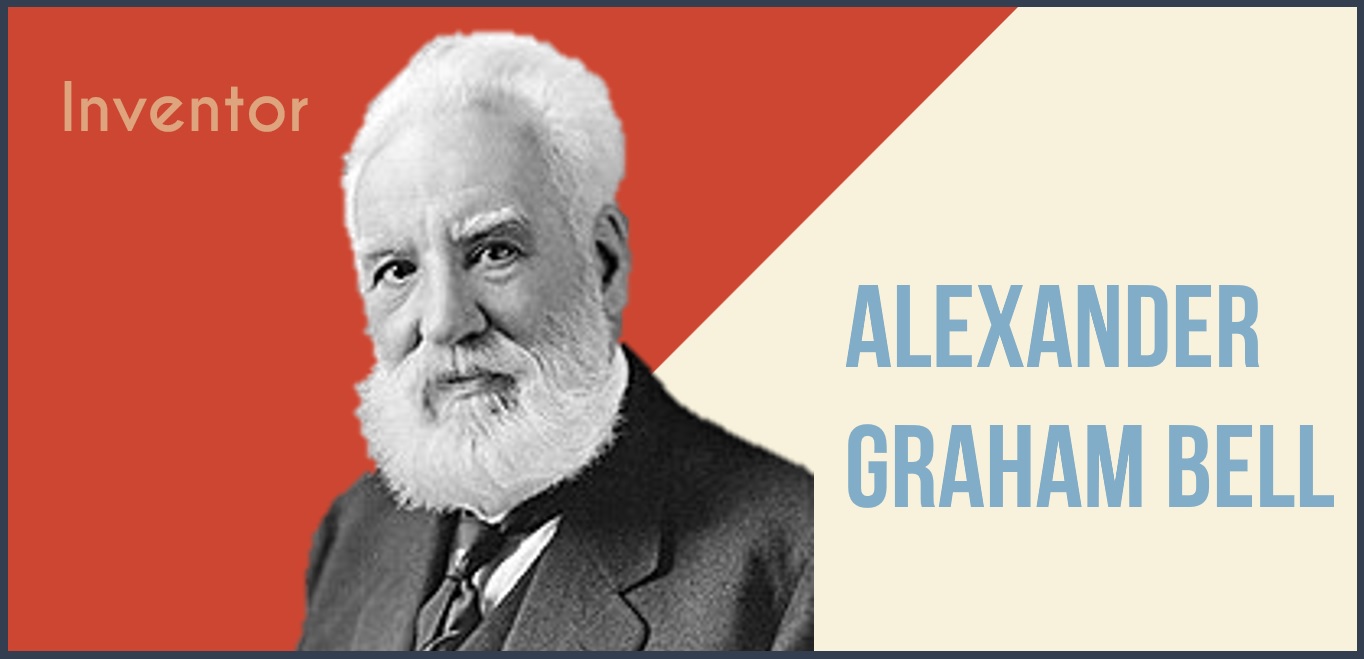Vocabulary
Before reading, translate these words.
Elocution
Deaf
Influence
Mimicry
“Visible Speech”
Phonetic
Corn husk
De-husking
Flour Mill
Manual (adj)
Finger-tapping
Devotion
Acoustics
Pupil
Enroll
Automaton
Tuning Fork
Philologist
Contraption
Deduced
Mohawk (people)
Modify
Melodeon
Oratory
Burning the midnight oil
Harmonic
Telegram
Tone
Secured
Financing
Pluck
Overtone
Transmit
Liquid
Electromagnetic
Skyrocket
Transcontinental
Biography
Early Life
Alexander Graham Bell was born on March 3rd, 1847 in Edinburgh, Scotland. His father, grandfather, and brother had jobs related to elocution and speech. His mother and his wife were deaf. These things greatly influenced his work. He was a smart boy and taught himself how to play the piano. He also liked to do mimicry and voice tricks. He entertained guests with his talents. Bell’s father taught him to write and read Visible Speech, a type of phonetic alphabet. He was so good that his father used him during public demonstrations.
Bell was a great inventor even when he was young. He came up with his first invention when he was 12 years old. He created a de-husking machine for his neighbor to use in his flour mill. In the same year, his mother started to lose her hearing. He learned a manual finger language. The language used a finger-tapping system to communicate. He would sit beside his mother and tap the conversations that were happening around them. His devotion to his mother is what lead him to study acoustics.
Education
He received his early education from his father before attending the Royal High School in Edinburgh. He left the school at 15 before finishing. He developed his love of learning when he lived with his grandfather in London for a year. At 16 years old, Bell was a pupil-teacher at the Weston House Academy in Elgin. He was enrolled as a student in Latin and Greek. At the same time, he taught elocution to pay for his rent. The following year, he attended the University of Edinburgh.
First Experiments in Sound
Bell started experimenting with sound when he was introduced to an automaton in 1863. With his brothers, they made their own talking automaton. He also taught his dog to say, “How are you, grandmama?” Bell learned how to transmit sound using tuning forks. He thought it was a new invention, but a philologist told him experiments had already been done in Germany. The philologist sent Bell a copy of the research. He learned that vowels could be produced with a tuning fork “contraption.” Bell deduced that he could also transmit consonants this way as well. This led directly to his experiments in the coming years.
Canada
In 1870, Bell moved to Canada with his family. They lived in Paris, Ontario before moving to a farm near Brantford, Ontario. He set up a workshop on the farm and continued studying the human voice. While there, he translated the unwritten vocabulary of the Mohawk language into Visible Speech. He was awarded the title of Honorary Chief for his work. By 1871, Bell modified a melodeon to transmit music electronically over a distance. He moved to Montreal, Quebec with his father in 1871.
Teaching and Travelling
Later in 1871, Bell travelled around parts of the USA teaching the Visible Speech System. He decided to stay in Boston longer. He even worked with Hellen Keller. He continued his work with the blind, becoming a professor of Vocal Physiology and Elocution at the Boston University School of Oratory. After teaching, Bell would burn the midnight oil conducting experiments on his “harmonic telegram”, the original name for the telephone.
Inventing the Telephone
By 1874, telegraph was so popular that there were too many messages for the system to manage. Thomas Edison and Elisha Gray were working on a way to send multiple messages on telegram. They were even able to send multiple tones. This put pressure on Bell, who secured financing from Gardiner Hubbard and Thomas Sanders. Bell also met Thomas A. Watson, an electrical designer, and hired his as his assistant.
While working on the telephone, Watson accidently plucked a wire. Bell heard it on the receiving end of the telephone and also heard overtones. It showed Bell that voice-like sounds could be transmitted over one wire. It led to the creation of the acoustic telegraph, a precursor to the telephone.
March 10, 1876 was the first time a telephone was used. Bell had completed his telephone. He said, “Mr. Watson – Come here – I want to see you” into the telephone and Watson heard it on the receiving end clearly. Bell had used a liquid transmitter invented by Elisha Gray but wanted to create his own electromagnetic device. He never used the liquid transmitter in demonstrations or in public.
In the summer, Bell moved back to Canada to continue working on the telephone. In a series of tests, he was able to communicate from farther and farther away. The first test was between Brantford and Mount Pleasant. The second test was between the Bell house and the telegraph company in Brantford. The third test was between Brantford and Paris, Ontario (13km). These were all one-way calls. The first two-way call took place on October 9th, 1876 in Boston and Cambridge, Massachusetts.
Telephone Success
The Bell patent skyrocketed in value as Bell toured around demonstrating his invention. He even demonstrated the telephone to Queen Victoria. The Bell Telephone Company was created in 1877. Less than 10 years later, more than 150,000 people in the US owned phones. In 1915, Bell made the first transcontinental telephone call from New York City to San Fransico.
The telephone wasn’t Bell’s only invention. He would go on to invent the Photophone (pre-cursor to fiber-optics), metal detectors, hydrofoils, and AEA Silver Dart. In total, he held 18 patents from many different fields of research. He died of diabetes at the age of 75.
Questions
The questions will guide you through the reading and give a deeper understanding of the text
- Where was Bell born?
- What was the phonetic language that his father taught him?
- What was his first invention at 12 years old?
- How did he communicate with his mother?
- What subject did he teach?
- When did Bell move to Canada?
- Which unwritten language did Bell translate into Visible Speech?
- What was the original name for the telephone?
- Who was Bell’s assistant?
- What was the first message sent over a telephone?
- When was the first two-way call completed?
- Bell was born in Scotland, lived in Canada but did most of his work in USA. He was a dual-citizen being both British and American. Do you consider him a Canadian?
- The telephone is considered one of the greatest inventions. Where would you rank it? What are some more important inventions?


